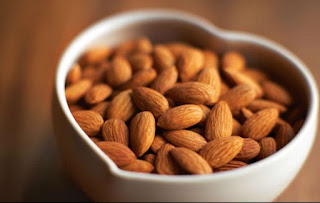What's the connect between GST, almonds and a small town named Modesto: Food For Thought?
What's the connect between GST, almonds and
a small town named Modesto: Food For Thought?
When interim Finance Minister Piyush Goyal presented the interim Budget for 2019-20 in the Lok Sabha, he also gave a report card of his government’s achievements in these four years past. And even the Opposition, which has been scathing of these proposals as designed to garner votes, would have had to agree with the minister when he said GST (Goods and Services Tax) is undoubtedly the biggest taxation reform undertaken in India since Independence. That is undeniably so, for, since its inception in July 2017, GST has created a buzz and changed the way how India transacts and does business.
And while GST may be mentioned in the budget speech as one of the major achievements of then Narendra Modi-led NDA government, the business of GST is actually transacted outside the Parliament. A GST Council has been formed that is headed by the Finance Minister and comprises of representatives drawn from all states of India. The council meets routinely to decide on what taxes to levy on what category — and this levy of different taxes on different products — and that has ramifications on the ultimate price of goods. Now you’d think that all similar products would be taxed similarly but you’d be wrong — not all cars are rated the same, some are for the masses and others fall under the luxury category — so the tax rates on a Maruti and a Mercedes is different. Even within the company, the entire product portfolio may not be taxed similarly.
But it is the GST on nuts that’s making some people in as fa as California go nuts (figuratively and not literally of course). Initially, all that we know of as dry-fruits, that make up the ubiquitous Diwali box were put in the 12 percent tax category. But then GST on cashews and raisins was reduced to 5 percent and that’s where it has stayed. But that has put other nuts like almonds or walnuts at a disadvantage. But why would that have a ripple in California? Because that US state not only has the Silicon Valley, it also produces 80 percent of the world’s almonds. Spain is the largest importer of California almonds followed by India and China

Mazumdar, the Almond Board of California and several trade bodies have made representations to the GST council and the government to treat all tree-nuts at par. “Tree Nuts have been put in three GST bands. Coconuts and Brazil Nuts have no GST; cashew nuts, walnuts, acrea nuts and groundnuts have a 5% GST. Other nuts like almonds, pistachios, hazelnuts, etc are at 12% GST. The Almond Board welcomes the introduction of GST and the simplification of the taxation regime which can only help in economic growth. The only issue is the rate applicable to almonds causing disparity with other comparable nuts and dry fruits. This creates inconsistencies within the nut category, making it more difficult for consumers to afford a healthy nutritional product. We are confident that the GST Council will consider this aspect and take a consistent approach across all tree nut/groundnut categories.”
On a trip to Modesto, late last year, I interacted with Emily Fleischmann, Senior Director, Global Marketing, Almond Board of California. She told me that the board sees India as a significant growth market. “We’re currently allocating about 10 percent of our very significant annual budget to India ($6 million approximately) and that commitment will continue. Our committee members make the decision of where the money goes each year and sitting around that table, it is pretty unanimous that India is right for the future.”
Fleischmann added: “We really are focussed on where the opportunity for growth is and we believe that it’s in increasing the frequency of consumption within India, not just in the mornings but also mid-day consumption — both for moms and professionals. We have marketing programmes to reach the consumers in the south, the north and the west of the country to make sure they are aware of the health benefits, and it both comes in the form of advertising as well as PR activities.”
The Almond Board of California is currently doing a segmentation study within the country to understand consumption behaviour and where consumers have the opportunity to add almonds to their daily routine. So soon we in India may be motivated to consume almonds differently from our traditional method — the five -soaked almonds in the morning that keeps our brain functioning well. (Tip from a self-professed foodie: try it as a breakfast cereal mix, adds texture and fibre to make breakfast more hearty)




Comments
Post a Comment